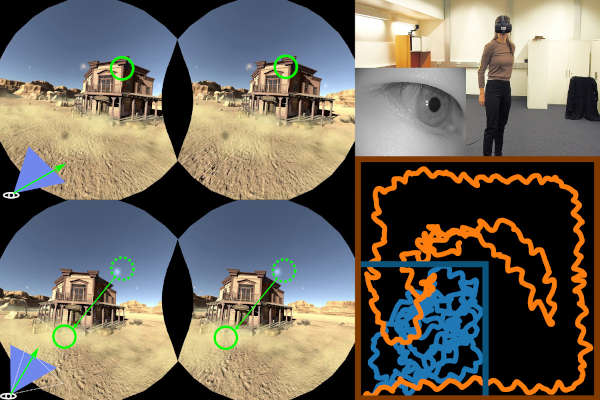| Walk A Thousand VR Miles And Never Leave The Room |
| Written by Mike James | |||
| Wednesday, 30 May 2018 | |||
|
In sci fi virtual reality is much realer than it is in reality, if you see what I mean. For one thing users can always walk around as if there were infinite space, but in reality they are confined in a small room. Now we know how to pull off such a trick - infinite virtual space in a finite room. Computer scientists from Stony Brook University, NVIDIA and Adobe have collaborated on a computational framework that gives VR users the perception of infinite walking in the virtual world--while limited to a small physical space. You could for example, play a VR game set in a huge desert and walk for miles seeking out your quarry. Solutions that have been tried in the past have mainly involved rolling treadmills or non-stick coatings that allow the walker to walk without making any physical progress. Neither of these approaches works particularly well as walking doesn't seem free or natural. Now we have a free walking method that keeps the user within a finite space while allowing the illusion of infinite space. How can this magic be possible? Easy, once you know how. The human eye isn't stationary when looking at a scene. It flicks about all over the place fixating different parts of the scene. These are the "saccades" and they are the basis of the new method. The key observation is that during a saccade there is no observation - the subject is effectively blind until the saccade stops. This temporary blindness, "saccadic suppression", means that we aren't aware of the motion and don't get seasick. The trick is to trick the poor human while they are blind. Using a head and eye tracking VR headset the system detects the saccade and during the moment of blindness it rotates the virtual camera. What this means is that if you are walking in a "straight line" towards some focal point in reality you will end up walking in a very large circle. Not only does this mean that you can walk forever, the system can also guide you around obstacles so you don't fall over things. You might think that such crude redirection would be easy to detect and the whole trick would collapse - but you would be wrong. The redirection is hard to spot among the almost random movements we make. Although it isn't as good as being able to try it out for yourself, take a look a this video which shows it in action from multiple viewpoints:
If you have ever wondered about the story that if you try to walk in a straight line in a desert you actually walk around in a circle was true, it most certainly is in VR.
A user wears the experimental setup -- a Vive HMD augmented with SMI gaze tracking. Superimposed are the top view of the recorded movements of the physical path (blue)in a 3.5 m × 3.5 m real room and the virtual path (red) in a much larger 6.4 m × 6.4 m synthetic space. The team will present its work at SIGGRAPH 2018 and a paper should be published soon.
More InformationTowards Virtual Reality Infinite Walking: Dynamic Saccadic Redirection Authors: Qi Sun, Anjul Patney, Li-Yi Wei, Omer Shapira, Jingwan Lu, Paul Asente, Suwen Zhu, Morgan McGuire, David Luebke, and Arie Kaufman Related ArticlesOculus Go and More AR/VR at F8 Is Real Reality The Next Big Thing?
To be informed about new articles on I Programmer, sign up for our weekly newsletter, subscribe to the RSS feed and follow us on Twitter, Facebook or Linkedin.
Comments
or email your comment to: comments@i-programmer.info
|
|||
| Last Updated ( Wednesday, 30 May 2018 ) |



